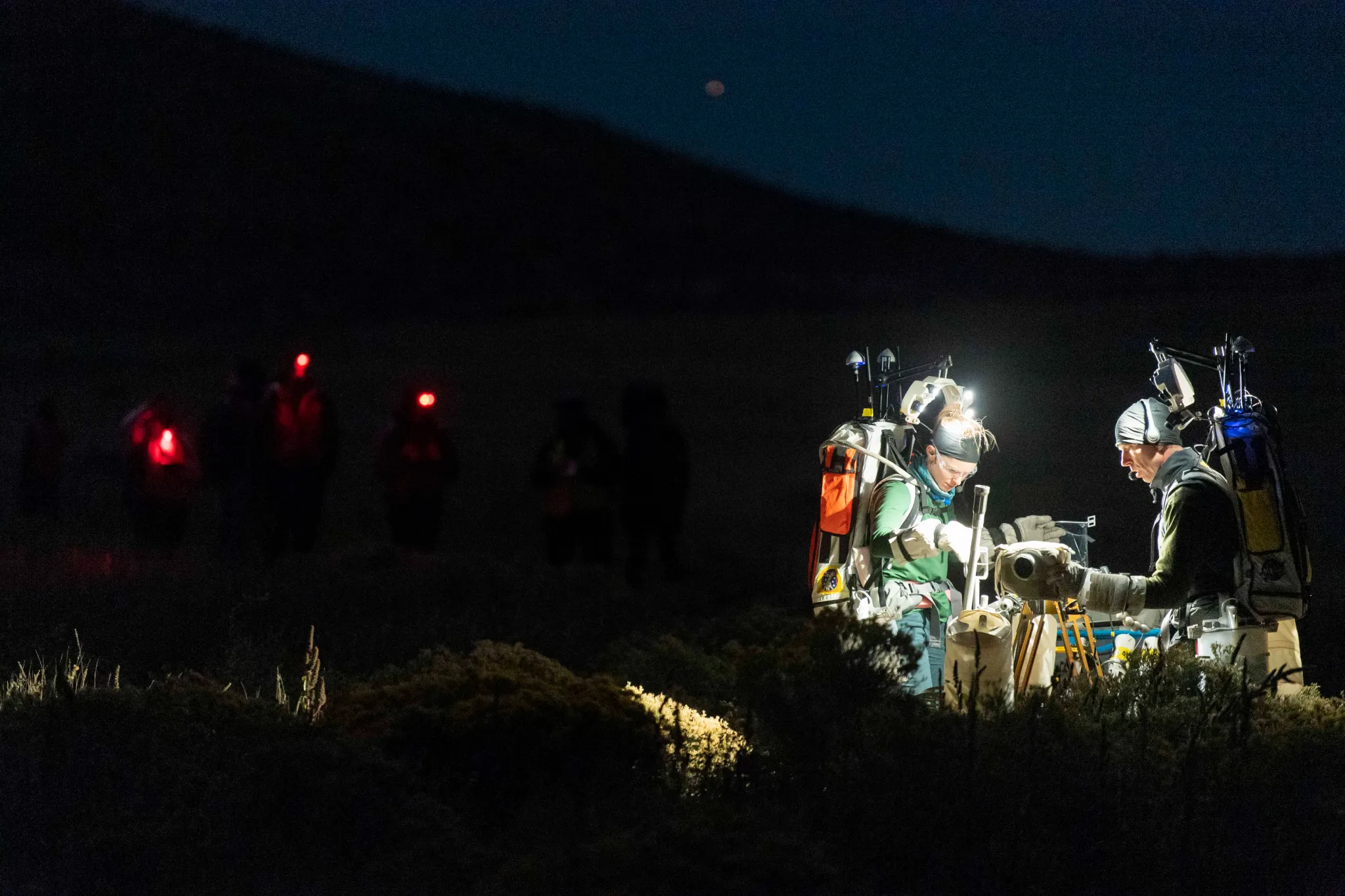
This week, NASA signed a Space Act agreement with Nikon to develop the next generation of camera for use on the surface of the moon, dubbed the “Handheld Universal Lunar Camera” (HULC). A few interesting notes from the announcement of the new camera, which will be based on the existing Nikon Z9 flagship:
- It’s a mirrorless camera – no moving mirror to get clogged with regolith, or any unnecessary moving parts.
- The sensor is likely to be either the same sensor in the existing Nikon Z9, a Sony IMX609AQJ Full Frame 45.7 MP Stacked Back-Illuminated CMOS Image Sensor, which does not have a “global shutter” feature, and does have “rolling shutter” on video, even with the Z9’s very fast 1/270 sensor readout speed. This is arguably best-in-class for eliminating rolling shutter, short of a global shutter. However, given the 2026 readyness date, I’m eager to see if they update the sensor to one with a global shutter instead.
- They’ll be radiation-hardening the electronic components for use in space and on the moon. I’ll be interested to see how very high resolution photography looks in a high radiation environment like the moon – even with the hardening.

It’s also worth remembering that the Apollo astronauts used the 70-mm Hasselblad Electric Camera on the surface of the moon – a very cool format and camera system that yielded amazing results. In researching this post, I came across this interesting NASA Apollo 11 Data Users’ Note, which notes the Apollo 11 Photographic Objectives:
Apollo 11 represented man’s first opportunity to directly observe scientific phenomena on the lunar surface. Both the surface and orbital photography of the mission served not only to document man’s first lunar landing and the extravehicular activities of the astronauts, but also to identify scientific areas and experiments for study in future missions.
The photographic equipment and materials carried by Apollo 11″were designed specifically:
- (1) to photograph “targets of opportunity,” i.e., scientifically interesting sites, and potential Apollo landing sites as time and circumstances permitted;
- (2) to obtain photographs of the lunar module and lunar surface activities after LM landing;
- (3) to obtain vertical and oblique stereo strips of nearside and farside regions of scientific interest;
- (4) to record mission operational activities; and
- (5) to obtain documentation for subsequent landing crew training purposes.

NASA’s Handheld Universal Lunar Camera and The Nikon Z9’s Role in Lunar Photography
NASA’s latest venture into lunar exploration photography marks a significant leap forward in camera technology with their introduction of the Handheld Universal Lunar Camera (HULC). In partnership with Nikon, HULC is poised to be the successor to a long line of cameras that have captured the moon’s mystique. The camera draws its lineage from the celebrated Nikon Z9 flagship, forming the backbone of this space-oriented imaging device.
Technical Specifications of the HULC
Built upon the foundation of the Nikon Z9, the HULC brings to the fold the professionalism and high capabilities one expects from a flagship model—yet with noteworthy tweaks for its lunar mission. At the heart is a mirrorless system. Doing away with the moving mirror reduces the camera’s vulnerability to lunar dust, known as regolith, and minimizes mechanical complications in the harsh lunar environment.
While the Nikon Z9 is already equipped with a high-caliber Sony IMX609AQJ Full Frame 45.7 MP Stacked Back-Illuminated CMOS Image Sensor, there’s speculation about whether this same sensor will make its way to the moon or if a new iteration with a global shutter will be implemented to completely eliminate rolling shutter effects—a common adversary in video recording.
Surviving the Lunar Environment
The lunar surface presents unique challenges—absence of atmosphere, extreme temperatures, and high radiation levels are some of the formidable foes that the HULC must withstand. To this end, radiation-hardening is central to the camera’s development, ensuring that the electronic components can withstand the high radiation levels found on the moon. This advancement not only protects the camera but also raises intriguing prospects about the quality of very high-resolution photography in such an environment.
The Development Timeline
Looking toward a readiness date in 2026, the timeline for the HULC’s development suggests a deliberate and meticulous approach. Given the evolving landscape of imaging technology, this period also allows for potential updates, such as an improved sensor with a global shutter, enhancing image fidelity for space applications.
Challenges of Lunar Photography
Photographing the moon’s surface brings a barrage of technical challenges that Earth-bound cameras seldom encounter:
- Extreme Temperature Fluctuations: With no atmosphere to moderate temperatures, camera materials must be exceptionally resistant to prevent malfunction.
- Radiation: Beyond the Earth’s protective magnetic field, heavy doses of cosmic rays can disrupt electronic systems.
- Dust: The moon’s regolith is fine and pervasive, capable of infiltrating and impairing mechanical and electronic systems.
- Lighting: The stark contrast between intense sunlight and deep shadows on the moon demands a dynamic range that can handle such extremes.
Echoes of Apollo
The HULC inevitably draws parallels to the legendary 70-mm Hasselblad Electric Camera used during the Apollo missions. It’s worth noting that these historic cameras faced similar challenges and their photographs have served both a scientific purpose and provided iconic images that have captivated humanity’s imagination.
As the HULC prepares to follow the lineage set by its spacefaring predecessors, its design and capabilities promise to push the boundaries of what’s possible in extraterrestrial photography—capturing not just the stark beauty of the lunar landscape, but the spirit of human exploration and scientific curiosity.
